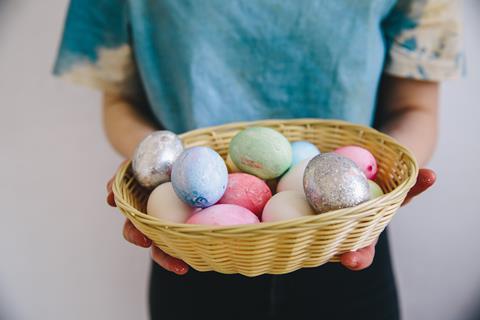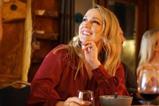Writer Lauren Windle investigates a conundrum that she’s wrestled with since childhood – why do we associate Easter with chocolate eggs?

I believed all sorts as a child. I thought I could find out if people liked butter by holding a small yellow flower under their chin and that if I swallowed chewing gum it would stay in my stomach for seven years. Someone also told me that chocolate eggs are the same shape as the stone that covered Jesus’ tomb, so we eat it on Easter because that’s when he got rid of (rolled rather than ate) the stone and left his grave. Turns out, this isn’t the case.
So why do we eat chocolate and gift each other eggs at Easter? My deceived six-year-old self needed to right a wrong so I investigated.
Easter is, of course, when we celebrate the huge sacrifice Jesus made for us on the cross and his subsequent and miraculous resurrection, triumphing over death and the schemes of the enemy. But pre-Christianity, there was a pagan celebration of spring equinox around the same time.
“Some Christian missionaries hoped that celebrating Christian Holy Days at the same times as pagan festivals would encourage conversion.”
Speaking to Time Magazine, Professor Carole Levin of University of Nebraska said: “Some Christian missionaries hoped that celebrating Christian Holy Days at the same times as pagan festivals would encourage conversion, especially if some of the symbols carried over.”
One of these symbols that was incorporated into both celebrations was the humble egg. Eggs are a symbol of new life, fertility and birth. In the Christian faith in Western Europe, it is associated with the resurrection but – and crucially for six-year-old Lauren – also gained the additional symbolism of the stone rolled from the tomb.
The practice of gifting eggs to each other originates from the spring equinox but by the Victorian era they were handing out cardboard ovals filled with Easter treats. The fanciest of these traditions are the pricey Fabergé eggs that most of us have only ever seen on telly.
Eggs are a symbol of new life, fertility and birth.
Chocolate eggs cropped up in France and then Germany and later in the UK. Initially – before mould and milk chocolate – they were solid dark chocolate and pretty bitter. It was in 1873 that the first hollow egg was made by JS Fry & Sons produced and after two years John Cadbury jumped on the bandwagon to create chocolate eggs on an industrial scale. These days in the UK we gobble up 80 million Easter eggs every spring. That’s an average of eight per child – but thankfully I’m doing my bit for the kids and making sure I eat my fair share.





































No comments yet